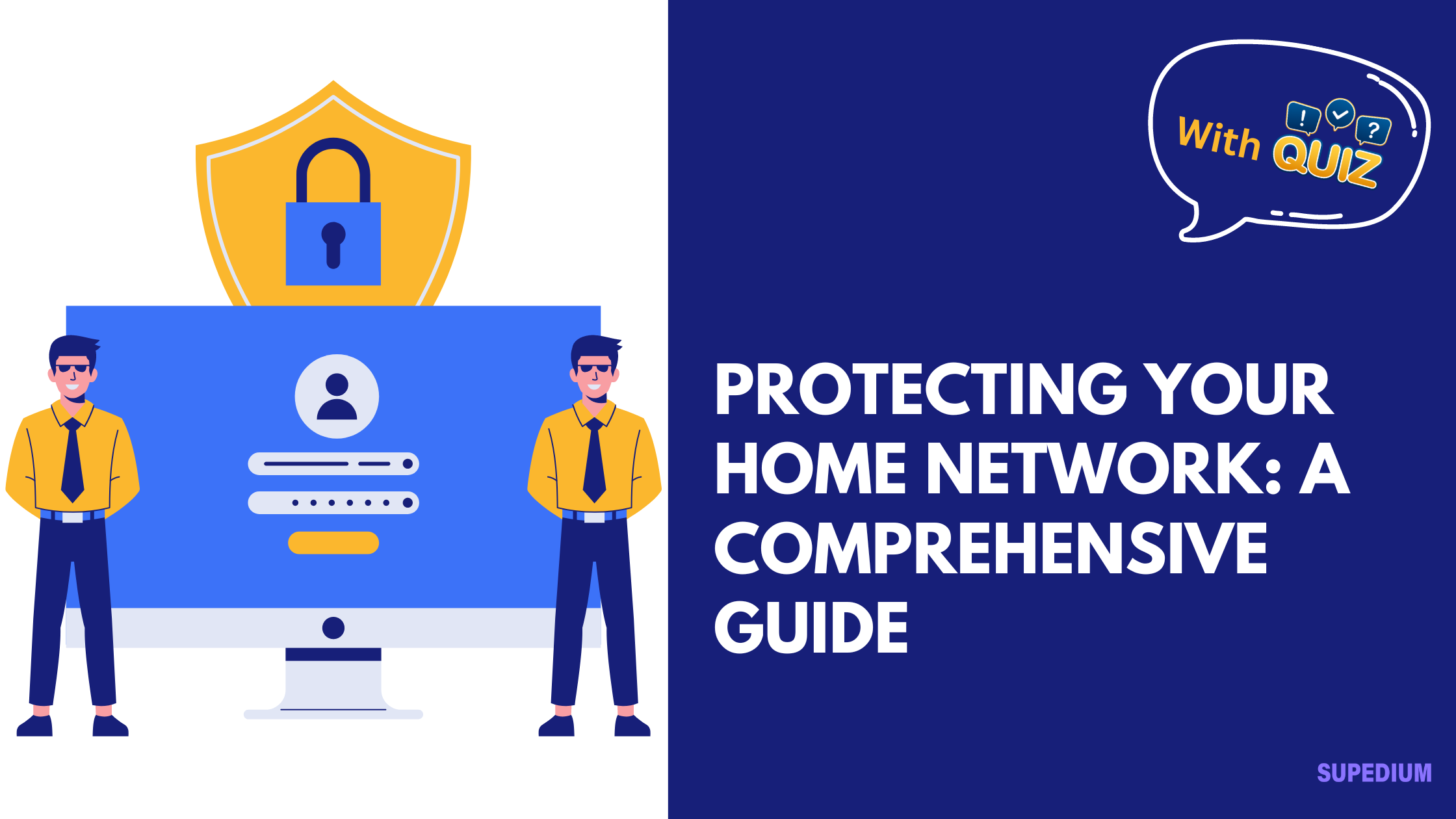Table of Contents [hide]
![]()
In an age where our lives are deeply intertwined with digital technology, securing your home network is more crucial than ever. With the increasing number of devices connected to the internet, from smartphones to smart home gadgets, safeguarding your home network is essential for maintaining privacy, data integrity, and overall security.
Assessing Your Current Network Security
Network Devices Inventory
The first step in protecting your home network is understanding what devices are connected to it. This includes everything from computers and smartphones to smart thermostats and security cameras. By creating an inventory of these devices, you can better identify potential security risks and ensure each device is properly secured.
Current Security Measures
Evaluate your existing security measures. Check your router’s settings and review any firewall configurations. Ensure that antivirus and anti-malware programs are installed and up to date. If your security measures are outdated or insufficient, it’s time to enhance them.
Potential Vulnerabilities
Identify any potential vulnerabilities within your network. This may include weak or default passwords, outdated software and firmware, or insecure network protocols. Addressing these issues is critical to preventing unauthorized access and maintaining the security of your network.
Strengthening Network Security
Securing Your Router
Your router is the gateway to your home network, making its security paramount.
- Change Default Login Credentials: Default usernames and passwords are commonly known and easily exploited. Change them to strong, unique credentials.
- Set a Strong Wi-Fi Password: Use a complex password for your Wi-Fi network. A combination of letters, numbers, and special characters is recommended.
- Enable WPA3 Encryption: If your router supports WPA3 (Wi-Fi Protected Access 3), enable it. If not, use WPA2. Avoid using WEP (Wired Equivalent Privacy) as it is outdated and insecure.
- Disable WPS: Wi-Fi Protected Setup (WPS) can be a security risk. Disable it to prevent unauthorized access.
Firmware and Software Updates
Regularly updating your router’s firmware is crucial as updates often include security patches. Similarly, keep your operating systems and applications up to date to protect against vulnerabilities that could be exploited by attackers.
Network Configuration
Properly configuring your network can enhance security.
- Disable Remote Management: Disable remote management features on your router to prevent unauthorized access from outside your network.
- Set Up a Guest Network: Create a separate network for guests. This keeps your primary network more secure and isolates potentially insecure devices.
- Configure a Firewall: Ensure your router’s firewall is enabled and properly configured to filter both incoming and outgoing traffic.
Network Segmentation
Network segmentation involves creating separate networks for different types of devices. For instance, you might have one network for your computers and another for IoT devices like smart thermostats or security cameras. This practice limits the potential damage if one network is compromised and adds an additional layer of security.
Monitoring and Managing Network Traffic
Network Monitoring Tools
Use network monitoring tools to keep an eye on your network’s activity. Many routers come with built-in monitoring features, but third-party software can provide more detailed insights.
Traffic Analysis
Regularly analyze network traffic to detect any unusual activity or patterns that might indicate a security issue. Understanding what normal traffic looks like can help you identify potential threats more quickly.
Regular Audits
Conduct periodic security audits of your network. Regular reviews and updates based on new threats can help maintain robust network security.
Educating Household Members
Cyber Hygiene Training
Educate everyone in your household about good cyber hygiene practices. This includes the importance of using strong, unique passwords for different accounts and recognizing phishing attempts and other social engineering tactics.
Safe Internet Practices
Promote safe internet practices among household members. Encourage them to avoid clicking on suspicious links or downloading attachments from unknown sources. Additionally, they should use secure websites (those with HTTPS) and be cautious when using public Wi-Fi.
Device Management
Ensure that all personal devices, including smartphones and tablets, are secure. This involves regularly updating device software and apps and using security features like biometric locks or PINs.
Backup and Recovery Planning
Data Backup Solutions
Implement a reliable data backup strategy. Regularly back up important data to cloud-based solutions or external drives. Test your backup restoration processes to ensure you can recover data if needed.
Incident Response Plan
Develop an incident response plan to address network breaches. This plan should include steps for containing and mitigating the breach, notifying relevant parties, and recovering from the attack.
Restoring from Attacks
If your network is attacked, having a clear strategy for recovery is essential. This includes methods for dealing with malware or ransomware and ensuring data integrity after the attack.
Advanced Security Measures
VPN (Virtual Private Network)
Consider using a VPN for an additional layer of security. A VPN encrypts your internet traffic and helps protect your data from being intercepted. Choose a reputable VPN provider to ensure effective protection.
Intrusion Detection Systems (IDS)
Implementing an Intrusion Detection System (IDS) can help monitor and analyze network traffic for suspicious activity. IDS solutions can alert you to potential threats and help you take action before a breach occurs.
Home Security Cameras and Smart Devices
Secure smart home devices by keeping their firmware updated and using strong, unique passwords. Regularly review the security settings of these devices to ensure they do not become potential entry points for attackers.
Conclusion
Protecting your home network is a continuous process that involves assessing current security measures, strengthening network defenses, monitoring for potential threats, educating household members, and having a solid backup and recovery plan. By taking these steps, you can safeguard your personal information, maintain privacy, and ensure the overall security of your home network.
As technology evolves, so do potential threats. Staying informed and adapting your security practices will help you stay ahead of new challenges and keep your home network secure.






Be the first to comment